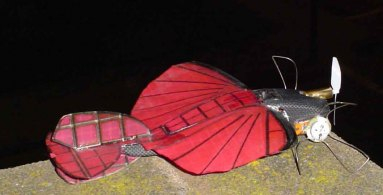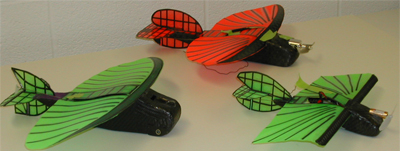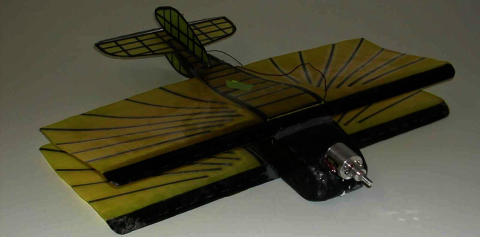Morphing Micro Air and Land Vehicles (MMALV)
The Morphing Micro Air and Land Vehicle (MMALV) is a hybrid air and land vehicle which can be used to serve as a remote sensor platform. The purpose of this vehicle is to serve as a device that can fly into hazardous/hostile environments, then land and walk around to explore, gather and relay intelligence so that decisions can be made about how to proceed in a dangerous situation without having to physically send people in to do the data collection. In this way, the risk to human lives can be minimized. Applications of the vehicle include intelligence operations, first responders who depend on difficult-to-obtain, real-time information to make decisions, and search & rescue operations.
MMALV combines the Whegs™ terrestrial locomotion technology developed at the Biologically Inspired Robotics Laboratory of Case Western Reserve University with the flexible wing micro air vehicle technology developed at the University of Florida. The vehicles are constructed of a carbon fiber airframe with flexible fabric wings and control surfaces. The flexibility in the fabric wings allows them to be compliant, which aids the vehicle’s aerodynamic stability during gusts. Whegs™ terrestrial locomotion technology is used for locomotion while the vehicle is on the ground. Whegs™ enable the vehicle to navigate unknown adverse terrain.
Currently, vehicles are on the order of 1 to 2 feet in wingspan. Work is being done to incorporate the following capabilities on the vehicle:
- Wing folding to allow the vehicle to be more compact and maneuverable on the ground and during idle transport
- Improved Whegs™ integration
- Testing different aircraft/wing configurations such as linearly tappered and elliptical wings, and biplane arrangements
- Aerodynamics testing to quantify the vehicle’s aerodynamic performance
- Installation of an autopilot for semi and fully autonomous operations
This project currently involves the work of graduate students working in the Biologically Inpired Robotics Laboratory, and undergraduate students who are enrolled in the following courses:
- EMAE 376 – Aerostructures
- EMAE 283 – Mechanical Engineering Lab II
- EMAE 398 – Senior Project







